Results 3,451 to 3,460 of 12096
Thread: Anandtech News
-
11-27-13, 11:30 PM #3451
Anandtech: Sponsored Post: Black Friday Deals from LogicBuy
The following post of hot deals is presented by our partners at LogicBuy.
The famed shopping day is here and e-tailers have unveiled their Black Friday 2013 deals. Our team of deal hunters have scoured the web for the best offers on all the latest tech and come up with a killer collection that represents the lowest pricing we've seen all year. Should any of these smoking hot offers end before you can snag it, head over to LogicBuy to get the latest Black Friday deals.
Laptops & Desktops
Valid 8am 11/29 - 7am 11/30: Dell Inspiron 11 Dual-core Touch Laptop w/2GB RAM, 500GB Hard Drive & Windows 8 for $299.99 with free shipping (normally $399.99 | via Dell).
Valid 11/28 only! Toshiba Satellite C50-ABT3N11 15.6" Dual-core Laptop w/6GB RAM (customizable) for $279.99 only (normally $399 - use coupon code: BFC5050 ).
15.6” Dell Inspiron 15 4th-Gen Core i5 Laptop w/6GB RAM & 750GB HDD for $449.99 with free shipping (normally $749.99 - use coupon code: HF08ZLDCXJM19W | via Dell).
Lenovo IdeaPad Y410p 14" Haswell Core i7 Gaming Laptop w/ 2GB GeForce GT 755M for $729 with free shipping (normally $1,299 - use coupon code Y410P73DB | via Lenovo).
Lenovo IdeaPad Flex 14 Haswell Core i3 Convertible Touch Ultrabook for $549 with free shipping (normally $799 - use $250 coupon code: FLEX1410DB | via Lenovo).
Lenovo IdeaCentre A730 27" 4th-gen Core i7 Haswell 1080p All-in-one Multi-touch PC w/ 2GB GeForce GT 740M & Blu-ray for $1,299 with free shipping (normally $1,999 - use coupon code A730DEAL | via Lenovo).
Up to $400 off + $50 Coupon: 17.3” Alienware 17 Haswell Core i7 Gaming Laptop for $1,399.99 with free shipping (normally $1,499.99 - use coupon code: 2M66J?BPVPP$F3 | via Dell).
25% off! Lenovo ThinkPad X1 Carbon Touch Ultrabook Laptop w/128GB SSD for $1,086.75 with free shipping (normally $1,449.99 - use coupon code: DOORBUSTER | via Lenovo).
30% off! Dell XPS 8700 Core i7 “Haswell” Quad-Core Desktop w/8GB and 1TB HDD for $649.99 with free shipping (normally $924.99 - use coupon code: HF08ZLDCXJM19W | via Dell).
HP Pavilion 500-210qe 4th-gen Core i5 quad-core Haswell Desktop for $469.99 with free shipping (normally $599.99 - use coupon code:SVD8492) | via HP).
Tablets
Microsoft Surface Windows RT Tablet for $199 with free shipping (normally $349 | via Microsoft Store).
Lenovo Yoga 8 16GB Android 4.2 Tablet for $249 with free shipping (normally $269 | via Lenovo).
Dell Venue 8 Pro 32GB Windows 8.1 Tablet + Folio Case & 1-year Accidental Damage Warranty for $299.99 with free shipping (normally $378.98 | via Dell).
Dell Venue 11 Pro 64GB Windows 8.1 Tablet + 1-year Accidental Damage Warranty for $499.99 with free shipping (normally $763.27 | via Dell).
Computer Accessories  
24” Dell UltraSharp U2413 PremierColor 1920x1200 IPS Monitor (2013 model) for $379.99 with free shipping (normally $599.99 - use coupon code:$PWG5126T786W?).
23” Dell U2312HM UltraSharp 1080p IPS Monitor for $169.99 with free shipping (normally $299.99).
HDTVs & Home Theater  
60” Sharp LC-60LE650U 1080p, 120Hz LED Smart TV for $998 with Free $250 eGift Card & free shipping (normally $1,198).
55” Samsung UN55F9000 3D 120Hz 4K Ultra LED Smart TV for $2999.98 with free shipping (normally $4,499.98).
50” Samsung Un50EH5300 1080p 120Hz LED TV for $647.99 with Free $150 eGift Card & free shipping (normally $899.98).
39” Seiki SE39U704 2160p 4K LED TV for $482.99 with free shipping (normally $699).
Disclaimer All product and deal information such as discount, price and availability are believed to be accurate as of the time of publication. However, deals and coupons from merchants can expire, sell-out, or prices can change at any time. Please verify all information with the merchant’s site carefully.

More...
-
11-28-13, 02:00 AM #3452
Anandtech: Best Budget Laptops - Holiday 2013
Introduction
Over the past decade, we've seen a dramatic slowing in the rate of performance increases on PCs and laptops. Where it was typical to see a doubling in performance every couple of years back in the 90s and perhaps even in the early 2000s, if we look purely at CPU performance on laptops, the difference between the past several generations of processors has been largely academic. Sandy Bridge was a good improvement over Clarksfield, though that was mostly thanks to the much higher Turbo Boost range. Ivy Bridge on the other hand was far more about improving integrated graphics, and while Haswell offers higher performance iGPUs on certain models, the bigger change with Haswell is power efficiency.
If we look at our historical database for Cinebench R10 as a rough gauge of CPU performance, on Intel platforms single-core performance of Sandy Bridge is around 35% more than Clarksfield, Ivy Bridge is 16% faster than Sandy Bridge, and now Haswell is a scant 8% more than Ivy Bridge. Multi-threaded performance has done a bit better, with a generational improvement of 75% with Sandy Bridge, 22% with Ivy Bridge, and Haswell brings 12%. Or taken at a higher level overview, Haswell ends up being 64% faster than Clarksfield in single-threaded performance and 124% faster in multi-threaded performance. Yes, that's a pretty sizable difference, but Clarksfield came out in September, 2009, so in four years we haven't quite doubled CPU performance -- and if we focus on Sandy Bridge instead of Clarksfield, we're now only 23% faster single-threaded and 32% faster multi-threaded. What that means is that shopping for a laptop based purely on CPU performance is becoming increasingly meaningless...but looking at other areas of laptops there are still substantial improvements to be had.
A state-of-the-art Clarksfield notebook as one example would have been sporting a GeForce GTX 280M GPU back in late 2009, and today that same GPU is roughly at the same level of performance as the GeForce GT 740M -- and without any DirectX 11 support (though outside of Crysis 3 I'm not aware of any games as yet that require DX11). More importantly, today's GTX 780M is nearly four times as fast as the old GTX 280M. If the improvement in graphics performance is impressive, the increase in potential battery life is no less so. Thanks to things like NVIDIA's Optimus Technology that allow the GPU to completely power off, along with improved efficiency in virtually all other areas, notebooks and laptops can easily hit 8+ hours of battery life where notebooks in the Clarksfield generation typically topped out at around two hours (with a rather large battery).
What all the above means is that today's budget laptops can still be reasonably fast, all while delivering good battery life. Of course, one of the best ways to improve the overall experience of a laptop is to use a solid state drive (SSD), and unfortunately, we're not yet at the point where budget offerings can include SSDs without substantially increasing the cost. That's not to say that you can't add your own SSD, but the mass produced laptops that generally sell in the budget category rarely elect to use a smaller, faster SSD rather than a larger 5400RPM HDD with 500GB-1TB of storage. Other than that one aspect, budget laptops can quite easily deliver more than enough performance for everyday use -- they now come with sufficient RAM (4GB to 8GB), CPUs/APUs have been "fast enough" for five years or so, and outside of gaming the integrated graphics from both AMD and Intel is sufficiently fast as well.
There's one problem, and unfortunately it's not something that you can easily determine when just looking at a laptop: battery life. I've seen laptops with similar configurations where a properly tuned system will get 50% or more battery life than one where the manufacturer hasn't properly optimized for mobility. Generally speaking, if a laptop doesn't make any claims about battery life (e.g. "up to eight hours"), I'd be leery of the system -- at least do some searching for reviews and verify that the battery life is acceptable. Other than battery life (and an SSD), the things that matter most to me these days have very little to do with performance. Instead, I like to try out the keyboard and touchpad, look at the display, and basically "kick the tires". While performance is almost always "fast enough", if the keyboard or touchpad is a chore to use, or if the LCD doesn't line up with the price of the laptop, I can tell within just a few minutes whether or not a laptop is worth my time.
So with that said, let's look at some of the budget laptops that are out there, and discuss the pros and cons of each. We'll go in order of increasing price, and pick out one or more options for each category, as well as give a general overview of what you should expect to get in terms of hardware at each price. Black Friday and Cyber Monday are coming fast, so take the following as baseline recommendations rather than a statement that these are the only budget laptops worthy of consideration. If you can get a great deal on a laptop and the overall package has what you want/need, go for it.
Chromebooks: the New Netbook ($199-$299)
Acer C720 for $249 ($199)
Anand looked at the HP Chromebook 11 while Acer sent me the C720. It's a really odd situation where the less expensive device ends up being superior in almost every meaningful way...except for the display, where HP's IPS panel is far better than the bog standard TN panel used in the C720. However, Chromebooks are more for Internet work than things like movies and images (in my view at least), making a great display more of an added perk than something truly necessary...and let's not forget the price. The C720 initially launched at $249; for that price you get 16GB of eMMC storage, which is pretty typical on an entry level Chromebook, but more importantly you get a Haswell Celeron CPU (2955U), 4GB DDR3 memory, and enough battery capacity to last around seven hours of light Internet use. If $249 is still too much, there's a new C720 available that cuts the RAM down to 2GB but keeps everything else the same, and it can be had for $199. Top it off with a keyboard that's reasonably comfortable and a touchpad that works fine, and the only real question is whether you can live with the limitations of ChromeOS -- and let me also just state that today's ChromeOS is far different from the original OS that launched with the CR-48; it's far more capable and useful in my view. Our full review should post within the coming week, but if you can't wait and you're looking for a pure budget laptop, I can't think of a better option than the Acer C720.
Budget Windows Laptops ($300-$500)
Moving up to a "real" Windows laptop, the price is going to jump quite a bit -- the Windows license alone should account for at least a $50 increase over a Chromebook, but for most people a laptop that's going to be useful will need Windows. (I suppose OS X could work as well, but "budget" and "Apple" don't usually go together.) My recommendations are to get something with either Haswell, or if you don't mind an overall slower experience, AMD's Richland APUs are fine as well (though Kaveri will be replacing Richland in the coming months). Haswell, even in Celeron and Pentium form, is still good for a healthy boost in battery life relative to Ivy Bridge, and with clock speeds starting at 1.4GHz with the Celeron 2955U, it's still plenty fast for general home, school, or office use. The things you really need to consider are what sort of display you want (touchscreen or not), and how much you're willing to spend.
Dell Inspiron 11 3000 Touch ($380)
For our primary recommendation in this category, Dell gets the nod with their Inspiron 11 3000 Touch. Priced at $380, the specs are quite similar to the Acer C720 only you get Windows 8.1 and a touchscreen, with 2GB RAM and a 500GB HDD. You'll probably want to upgrade the RAM on your own to get 4GB, but even then we're well under the $500 mark. All of the core features are there, with nothing particularly noteworthy; battery life is rated at up to seven hours, so it covers the mobility aspect as well. It's still going to have a pretty mediocre display, but for the price that's pretty much something you have to live with.
Acer E1-532-4819 ($448)
Other options bring us back to Acer again, which is both good and bad. Acer has been hitting low price points for years, but they're rarely the best of breed when you get right down to it. The Acer E1-532P-4819 comes with 4GB RAM, a 500GB HDD, and a Pentium 3556U 1.7GHz processor. My biggest complaint is that it's a 15.6" 1366x768 display -- I'm okay with that resolution on smaller laptops, but at 15.6" I really prefer 1600x900 or even 1080p. Still, this is a budget offering so I'm willing to make some concessions. Along with the lower quality display, the battery life isn't particularly great -- Acer rates the E1-532P-4819 at four hours of battery life, with a 4-cell battery. Still, it's a decent set of hardware for under $450.
Acer V5-552 or HP Envy 15z
For a final recommendation in the $300-$500 range, I wanted something with an AMD APU. Acer shows up again with their V5-552-8404, which doesn't have a touchscreen but comes with an AMD A8-5557M Richland APU, 4GB RAM, 500GB HDD, and a 1366x768 display. Battery life is apparently a bit better than the E1-532P (4.5 hours), and the price is slightly lower as well at $420. The other option is from HP, the Envy 15z-j100 currently available at $499 on sale. It's similar to the Acer in most areas, with an A8-5550M APU but 6GB RAM and a 750GB HDD. Battery life is listed as up to 9.75 hours, but I think that's for the dual-6-cell configuration so it's more likely around five hours. $50 extra will also get you a 1920x1080 display, if you're willing to stretch the budget a bit.
Mainstream Windows Laptops ($500-$750)
Our final category for budget laptops pushes our price limit to $750. Many might consider this "too high" to be called "budget", and we generally agree, which is why this is our "mainstream" laptop category. At up to $750, there are many options available, ranging from standard "do everything" laptops to Ultrabooks and even entry level gaming laptops. The door is also open for smaller 13.3" and 14" laptops that offer good configurations, where normally the only way to get a budget 14" is going to be something like the HP Chromebook 14. We should also be able to find laptops that don't have to compromise on battery life, so anything that doesn't claim at least six hours isn't going to make the cut with me. Sifting through the available options is still a bit of a chore, unfortunately -- there are far too many 1366x768 resolution panels floating around for my taste. After a lot of searching, I've come up with three mainstream laptops that are worthy of consideration.
General Mainstream Usage: HP Envy 15t-j100 ($699)
I just mentioned the AMD version of the HP Envy 15, but personally I would rather pay a bit more for the Intel Haswell variant. The base cost is only $50, and for that you can get a Core i5-4200M, 6GB RAM, and a 750GB hard drive. $50 extra adds the 1920x1080 display, which is what I'm recommending. If you're wanting a bit of the SSD experience without actually going for a full SSD, you can also add a 24GB mSATA SSD for $39, but I'd be more inclined to skip that and potentially add in a 240GB mSATA SSD when you can afford it. You can add a discrete GPU (GT 740M or GT 750M) as well if you're interested, but that pushes the price a little too high and honestly it's not necessary unless you're interested in gaming. If that's your primary interest, we have some other possibilities that might be more interesting.
Budget Gaming: ASUS X550LB-NH52 ($580)
If you want to be able to play every game out there at maximum quality settings, you're going to need a very beefy notebook. For those that are okay with medium to high detail at 1366x768, however, the requirements are far more reasonable. What's shocking is just how much performance you can find for under $750. The ASUS X550LB-NH52 is a new model, so I can't even find any reviews from a reputable site right now, but the core design looks similar to other ASUS laptops like the N56 series, with a few tweaks. In the case of the X550LB, you get a ULT Core i5-4200U processor with a GeForce GT 740M graphics card, 8GB DDR3L RAM, a 750GB HDD, and a 1366x768 display. The display is obviously not going to set the world on fire, but the resolution will actually be a good fit for the GPU. And with a price of just $580, you could buy your own 256GB SSD and swap out the hard drive and still come in under our $750 target price.
Alternative Gaming: Lenovo Y410p ($729)
If you're looking for an alternative budget gaming laptop, Lenovo has several options worth considering. The IdeaPad Y410p and Y510p are similar in that they're not going to have awesome battery life, but they should still last five hours or so for light use. They both sport faster GPUs and CPUs as well, with the i7-4700MQ and GT 750M GDDR5 coming in the base model. The Y510p technically falls just out of our $750 price range (even with the current sale), and sadly you don't get the 1080p display or other extras found on the higher cost models; the Y410p on the other hand comes with the i7-4700MQ and a GT 755M GDDR5, 8GB RAM, and 1TB hard drive for $729 (with the current sale pricing). The 1366x768 display also isn't quite so tiresome on a 14" laptop. If you want something larger, the IdeaPad Z710 is a 17.3" display with an i5-4200M and a GeForce GT 745M, 6GB RAM, and a 1TB HDD. More importantly perhaps, it has a 1920x1080 display. Battery life is a bit low at only four hours, and the GPU will struggle with 1080p gaming, but for the price it's still a decent package.
Mainstream Portability: Lenovo Yoga 11S ($749)
Ever since I first saw the Lenovo Yoga at CES 2012, I've been a fan of the design. I still think a good detachable is the better solution to building a hybrid laptop/tablet, but getting the hinge right is a bit tricky, and then you still need to worry about other aspects of the laptop like the display quality, type of storage, etc. Ultimately, Lenovo's Yoga 11S wins out with its 11.6" IPS display, 128GB SSD, and 4GB RAM paired with a Core i5-4200Y CPU. The CPU is rated at 11.5W TDP (6W SDP), with clock speeds of 1.4-1.9GHz, and battery life is listed as up to six hours. It will be a bit heavy as a tablet, and reports are that under load it can get a little warm, but it's a highly portable system that doesn't skimp on important things like the display and SSD. If you need something to carry around campus, this sort of laptop is pretty much ideal.
Wrap-Up
Again, this is by no means a comprehensive list of good budget laptops, and really any laptop out there is potentially just a price cut away from becoming a great bargain. Barring any severe issues (like a keyboard or touchpad that just doesn't work well, overheating problems, or really bad WiFi), most laptops are “good enough” these days. If you're after a quality laptop with a good display and a solid construction, you're likely going to need to pay for the privilege, but if you just want something that will let you take your work on the road, there's no need to spend $1500 or more on a state-of-the-art laptop. And if you have any other laptops you'd recommend, or any short-term holiday sales that you want to pass along, feel free to do so in the comments.

More...
-
11-28-13, 02:00 AM #3453
Anandtech: Synology Updates Surveillance Station NVR Package
We have covered Synology's Surveillance Station in a qualitative manner before, and one of our main complaints was the fact that the interface was reliant on Java. On lower-end PCs, it was so sluggish that it could even be deemed unusable. Synology officially launched the Surveillance Station 6.1 yesterday. This release introduced the Synology Web Object, allowing Windows browsers (Chrome, Firefox, and Internet Explorer) to function without Java. It also integrates with Windows Active Directory and LDAP for improved control over permissions. Availability of on-screen controls within the active windows enables greater control over the live view.
Surveillance Station 6.1 also brings about edge recording and center management, a scheme devised to mitigate bandwidth concerns. In this, recordings on remote cameras can be made to storage local to that network while the control can be kept at a single central location while minimising footage transmission to the main center. Some of the additional features include watermarking, time slicing and improved search capabilities.
In other Synology news, a new rackmount unit, the 1U 4-bay RS814 was introduced earlier this week. Based on a Marvell ARMADA XP 1.33 GHz dual core SoC, the unit sports dual GbE links with link aggregation providing over 200 MBps reads and 130 MBps writes. The unit also has 1 GB of RAM and sports a couple of USB 3.0 ports.
The RS814 is compatible with the RX410 expander, which can provide users with a total of 8-bays / 32 TB capacity. The RS814 and RX410 both have a MSRP of $600.

More...
-
11-29-13, 02:30 PM #3454
Anandtech: Best Gaming Laptops and Notebooks – Holiday 2013
We're in the midst of updating all of our "best of" guides for the holiday season, and we've already covered what is likely the most popular category: Budget Laptops. Some of what we said there also applies to gaming laptops, and our budget gaming recommendations in particular will be rehashed here, along with any other potential candidates. But here we'll also be looking at higher performance offerings that can handle all of the latest games, perhaps even at maximum details.
To be clear, not everyone needs or even wants a gaming laptop, and the presence of a discrete graphics chip pretty much requires that laptops include better cooling, which means they're also likely to weigh more and be bulkier. However, where other laptops can do most tasks except gaming, gaming laptops can actually handle pretty much everything – a laptop that's fast enough for gaming is also fast enough for office work, image and video editing, etc. About the only area where gaming laptops sometimes struggle – and this is more due to the notebook manufacturers not taking time to properly optimize for power draw – is battery life. Even that is becoming less of a concern, with many gaming notebooks able to last upwards of five hours (but not while gaming).
Because we're looking for laptops that can handle games, our least expensive recommendations are still going to cost over $500, and closer to $750 is usually a better starting point. Of course there are a lot of sales going on during the Christmas shopping season, in particular the Black Friday and Cyber Monday deals can be very attractive, but we'll mostly focus on typical prices rather than one-day sales. With that said, here's our recommendations, in order of increasing price and performance.
Budget Gaming Laptops (Under $1000)
Just to reprise what I said in our budget guide, there are quite a few impressive laptops under $1000 that can handle games. Determining what's best for you is going to be a matter of personal preference – some are happy with larger laptops while others are more interested in a somewhat portable device. I personally want to get at least a 1600x900 LCD, so my choice reflects that.
First Choice: Lenovo IdeaPad Y410p ($799)
Lenovo oddly enough has a fairly decent set of budget gaming notebooks right now (I say "oddly" because most people think of business laptops when you mention Lenovo). The Y400/Y500 series notebooks have had frequent sales and there's another going on right now, which means you can get quad-core Haswell i7-4700MQ with a GT 750M/755M for right around $750. For our budget laptop article, I enforced a strict $750 price limit, but for gaming laptops I'm ready to open the door a bit. The Y410p with an upgraded 1600x900 display runs $800, and along with that you get 8GB DDR3L RAM, an i7-4700MQ processor, and a GT 755M GDDR5 GPU, with a 1TB HDD and 24GB caching SSD. It's a very impressive offering, and it's worth noting that the "normal" price is $1299 (though the Y410p almost always seems to have a sale of some form going on). The Y510p is available with the same basic configuration but with a 1920x1080 LCD for $899 if you're interested. For the price, I think the Y410p may be the best budget gaming laptop around right now.
If you're looking for something closer to $500 than $1000, ASUS has one of the most impressively priced laptops that's still suitable for moderate gaming right now with their X550LB-NH52, currently selling at Newegg for just $580. For that price, you get a Haswell ULT i5-5200U processor, which should be fast enough for any current gaming workloads. More importantly, it comes with a GeForce GT 740M graphics card, which should be able to run most games at the native 1366x768 resolution and medium to high detail settings. It also comes with 8GB DDR3L RAM and a 750GB hard drive, though adding some form of solid state storage is still something we recommend. (Note: it appears the X550LB-NH52 has gone out of stock at Newegg, unfortunately, so you may need to look for other options.) The Z710 is another Lenovo laptop that might be worth a look – it has similar specs to the ASUS X550LB, but it has a 17.3" display and costs more, so you'll have to decide if you prefer the overall design to the ASUS.
I also want to quickly cover the AMD APU options at this price point, but frankly there's just nothing that can compete with the X550LB-NH52 – Intel's i5-4200U is faster than AMD's current Richland CPU cores, and the GT 750M is faster than AMD's iGPU. Considering the lowest price I can find for a laptop with an A10-5750M is around the same price as the ASUS, there's not much point in gamers going that route – Richland may be "fast enough" for most gaming workloads, but when something else costs the same and runs faster I have to stick with what makes sense. If you disagree, that's fine (not to mention the X550LB being out of stock) – the Lenovo G50s has an A10-5750M, 6GB RAM, 1TB HDD, and 15.6" 1366x768 LCD for $550. Alternatively, there's the Sony VAIO F SVF15414CXW/ SVF15414CXB with 4GB RAM and the same APU, with a 750GB HDD and 15.5" 1366x768 LCD for $580, and Acer's V5-552-X814 is also $580 with 6GB RAM, 750GB HDD, and a 15.6" 1366x768 LCD.
Mainstream Gaming Notebooks ($1000-$1500)
When we get to the mainstream gaming notebooks, I have to look at the $800 Y410p recommended above and then find more expensive alternatives that offer noteworthy upgrades. What that means for gaming notebooks is that NVIDIA's GTX GPUs are the bare minimum I'll consider here – the GTX 760M is actually a fairly sizable jump in performance from the GT 755M, despite the relative proximity of their model numbers. The GT 755M has 384 CUDA cores running at 980MHz compared to 768 cores at 657MHz on the GTX 760M, with GPU Boost 2.0 on the 760M potentially running the GPU at even higher clocks. The GT 755M is basically good for 1366x768 medium to high detail gaming, or 1600x900 medium detail; the GTX 760M on the other hand can tackle 1600x900 medium to high detail or 1920x1080 medium detail. Basically, we're looking at a 20-30% performance advantage for the GTX 760M over the GT 755M, and an even larger advantage over the other GT 700M class GPUs. So with that said, I started looking for GTX class GPUs – though I should note that the Y510p is available in SLI form as well, which should be slightly faster than the GTX 760M/765M in most cases (as long as a game scales well with SLI).
The good news is that we've already looked at several of the contenders in this category of gaming laptop/notebook – the MSI GE40, Gigabyte P34G, and Razer Blade 14 give us an idea of what to expect in terms of performance and features. Other laptops that fall into this category include the Acer V3-772G, Clevo W230ST/W355STQ/W370ST, Gigabyte P27K/P35K, MSI GE60/GE70, Alienware 14/17, ASUS G750JW, ASUS N56JR, and maybe one or two others that I missed. Key things to look for in my mind are the display resolution and panel type, and the presence of an SSD. SSD caching is a step above hard drives, but at this price I really think you should be getting a 120GB SSD or larger. That's of course something you can add on your own without too much trouble on most laptops, and personally I'd rather add at least a 240GB SSD than to get a 120GB model, but some of the prices are pretty reasonable.
First Choice: Gigabyte P34G ($1400)
My current pick for a mainstream gaming laptop goes to the Gigabyte P34G. I know, the review still isn't done, but I've run a bunch of benchmarks and there's nothing that causes me concern. The P34G comes with a Core i7-4700HQ processor, GTX 760M GPU, 128GB SSD for the OS and applications, 1TB HDD, 8GB RAM, and an AHVA (similar to IPS) 1920x1080 matte display that looks great. The industrial design isn't quiet as nice as something like the Razer Blade 14, but it's an impressive amount of performance packed into a sub-4 lbs. Package no matter how you slice it. As the first Gigabyte laptop we've looked at in many years, it really has a lot to offer. $1400 is more than you'd pay for similar performance from a few of the other contenders, but while the Acer V3-772G-9460 basically matches the P35G in performance for $200 less, it also weighs roughly twice as much.
Runner-Up: Cleo W230ST with 240GB SSD ($1400)
I haven't had hands-on time with any of the Clevo notebooks I mentioned above, so I unfortunately can't say much about how they feel. I do have a Clevo W740SU, and while it's not necessarily a gaming laptop it does give me a few concerns about Clevo's latest offerings. They fixed the keyboard layout as far as I'm concerned, but at least on the W740SU, the actual feel of the keyboard is terrible – I get missed keystrokes all the time on it. (Hopefully the other new models have a better keyboard feel.) Battery life is also much lower than it should be, and that's typical of Clevo notebooks – they just don't optimize for battery life as well as many of the other OEMs. Still, the ability to fully configure your notebook is definitely attractive, and boutiques like AVADirect allow you to do exactly that, so you won't have to open up the chassis and add your own SSD, and pricing isn't bad either. Of the three, I'd personally go with either the 13.3” W230ST and its 1080p AAS display or the 15.6” W355STQ – the latter being larger and less expensive, but it doesn't have an IPS/AHVA/AAS display. Either way, you can configure your system with a 240GB mSATA SSD and a 1TB HDD (or SSHD if you want one of those) and still remain under the $1500 price point.
High-End Gaming Notebooks ($1500+)
At the high-end of the gaming notebook market, there is really only one reasonable GPU in my opinion, and it's NVIDIA's GTX 780M. Yes, there are laptops with GTX 770M as well, but it's a fairly sizable step down from the 780M and not necessarily much cheaper. If you're spending close to $2000 (or more) on a gaming notebook, I can't see going with anything less than the best GPU. With the GPU requirements out of the way, we only have thee main contenders, but I'll go ahead and at least mention a couple more GTX 770M notebooks for reference. Dell has their Alienware 17 and Alienware 18 notebooks, though at this point I really think with the 18 being so large it needs the option for a 2560x1440 display to go with the SLI GPUs. Clevo has several notebooks as well, including the single-GPU P150SM/P157SM and P170SM/P177SM as well as the dual-GPU capable P370SM/P375SM/P570WM – again, I'm going to pass on recommending the SLI options, and personally I'd skip the tramp stamp P157SM and P177SM. Finally, there's MSI with their GT60 and GT70 notebooks. I've linked AVADirect on the Clevo and MSI laptops, but you can find the same core notebook from many other vendors as well – CyberPowerPC, DigitalStorm, OriginPC, Sager Notebooks, XoticPC, and Mythlogic come to mind. The only real differences between the various vendors will be pricing, configuration options, and perhaps a few visual modifications (e.g. a different cover for your laptop).
In the realm of GTX 770M laptops, nearly all of the notebooks we already mentioned can be configured with a GTX 770M as well. There are two other notebooks that I'm aware of that support the 770M but not the 780M: the ASUS G750JX and the Toshiba Qosmio X70/X75. I'm actually working on testing the G75JX, and the inclusion of a 256GB SSD along with the 1TB HDD is certainly appreciated. All of the 17.3” notebooks are really large, though – I've been mostly sticking with 15.6” and smaller laptops for my own use over the past several years, and hauling around the G750JX on my Thanksgiving trip has been a bit of an eye opener. Everyone that sees it comments, “Wow, that thing is huge!” So with that said, my favorite high-end gaming notebooks these days are sporting 15.6” displays.
First Choice: Clevo P150SM ($2000+)
Having tested the P157SM, I'm inclined to go with the P150SM instead – aesthetically, it's just more pleasing to not have that ugly trackpad, but YMMV. Configured with the i7-4700MQ, 8GB RAM, a 240GB SSD, 1TB Seagate SSHD, and a GTX 780M the price comes to around $2000, depending on where you buy the laptop. The hardware is plenty fast, and the majority of games can basically be run at “maxed out” settings and 1920x1080. If you're looking for other potential configuration choices, consider upgrading the CPU to the i7-4800MQ or i7-4900MQ, as there are a few games where the 4700MQ can limit performance. Personally, on a high-end notebook I'd also seriously consider going with a 480GB/512GB SSD – 128GB simply isn't enough for most of the applications, documents, etc. that I use, and even 256GB can feel a bit cramped. With 512GB, I'm able to install all the software I want and still have plenty of space for video and image editing, a few games, etc. Not all vendors offer 512GB mSATA drives, but Mythlogic's Pollux 1613-Black does have the option for a 512GB Samsung SSD as a $444 upgrade – not too bad, considering brand new 2.5” 512GB SSDs cost around $400.
Runner Up: Alienware 17 ($2449)
The MSI GT60/GT70 aren't bad notebooks, but the use of a single fan for cooling definitely represents a concern, so given other alternatives I'd go elsewhere. Clevo gets my top pick for bang-for-the-buck, but for around $400 more the Alienware 17 may have a more pleasing design for some users, and it does use higher quality materials. The configuration I'd go with has an i7-4800MQ CPU, GTX 780M, 16GB RAM, a 750GB HDD with 80GB SSD cache (the size of the cache might actually make the AW17 perform closer to an SSD than HDD in regular use), 802.11ac WiFi, and a 17.3” 1920x1080 LCD. Considering you get a larger SSD for less money in the Clevo, you really have to be committed to the Alienware aesthetic before going this route, but either way performance will be excellent.

More...
-
12-01-13, 11:30 AM #3455
Anandtech: Dell Leaks Details of a 24” UHD 4K (3840x2160) Monitor, the UP2414Q
Currently there are several 4K options on the market – models using the higher end IGZO displays such as the Dell Ultrasharp 32” 4K (UP3214Q, $3500) or the ASUS PQ321Q ($3500, our review) are currently attracting the most attention.  From my perspective (and a few others), 32” is just too large for a desktop monitor and while 4K seems attractive, something smaller (27”) would be more palatable.  In comes Dell, who has leaked through their Belize website, the next generation 24” UHD Monitor, the UP2414Q.  (Interesting enough it is also mentioned on their US website, through the compatibility list of a sound bar.)
Putting arguments aside about OS scaling and whether someone needs 4K in a 24 inch monitor, the specifications do make for interesting reading:
- 3840 x 2160 in 24 inches = 183.58 pixels per inch, compared to 204 for the IBM T220/T221 and 137.6 for a 32” UHD
- 178º/178º Viewing Angle
- 99% AdobeRGB and 100% sRGB (G-B LED backlight we assume)
- Factory Calibrated to Delta-E < 2
- 10-bit, 1.07 billion colors
- HDMI, DisplayPort, mini-DP, four USB 3.0 and 6-in-1 card reader
Of course, information is limited.  Other reports online list this as an IPS panel, although that is ultimately unverifiable at this point in time - we can only speculate that a 24" high end panel is finally making its way through the chain.  The 32” UP3214Q from Dell is only 30Hz at full resolution unless you use DisplayPort 1.2a + MST (Chris is testing this monitor as I type), so one might assume that the 24” panel would be the same.
Price and release date not announced – given that the 32” models are around $3500, the offset of a smaller cut of panel against the increased difficulty in creating it might be the competing factors here.

More...
-
12-02-13, 06:31 AM #3456
Anandtech: Best Desktop Video Cards - Holiday 2013
Continuing our series of Holiday Buyer’s Guides, today we’ll be taking a look at desktop video cards. Cyber Monday kicks off today, and while video cards neither have the margins to allow deep discount sales nor the popularity to be doorbusters, that doesn’t mean there won’t be some good offers out there for gamers gearing up for 2014.
At this point AMD and NVIDIA have (to the best of our knowledge) completed their 2013 product rollouts, so for current generation products everything looks to have settled in place. NVIDIA for their part is continuing to offer the GeForce 700 series above $200 and the GeForce 600 series below $200, though the distinction is largely branding since so many of the GPUs are the same. Meanwhile AMD just finished launching a boatload of Radeon 200 series products from the high end all the way budget market, releasing a mix of products with both new GPUs (Hawaii) and reused GPUs (Tahiti, Pitcairn, Bonaire). The outgoing 7000 series is formally being phased out, but there is still a good amount of existing stock that needs to be sold before those cards fully dry up.
Meanwhile choosing from those lineups can be difficult or extremely easy depending on whether you’re buying on performance or price. Between the large number of official SKUs each GPU vendor offers and the even larger number of custom and factory overclocked cards their partners offer, there’s essentially a faster video card every $10 or so up to $400. So for buyers on a fixed budget it pretty much comes down to buying the SKU/video card you can afford, selecting among the various models available at that tier, while those buyers working from performance will find that there’s always a bit more performance to be found if they just open their wallets a bit wider.
For performance based purchasing, we’ve put together a small table laying out the different performance bands, and roughly how much you would need to spend to buy a video card that offers enough performance to reach that band. In general, high quality 1080p gaming will start at $199; going above that will find cards that are good for 1440p, 4K, and multi-monitor, while going below that will find cards that will require some quality sacrifices to stay at 1080p.
With that in mind, the “sweet spot” at the low end will stand at around $140 or so. $140 is enough to purchase a 2GB card like the Radeon R7 260X or GeForce GTX 650 Ti Boost, both of which offer a reasonable level of rendering performance while packing enough VRAM to have some legs. The new generation consoles are going to put additional pressure on PC video cards now that developers can use higher quality assets, so it’s beneficial to have enough VRAM to keep up.Holiday 2013 GPU Performance Guide Performance Band Price Range 1080p (Low) $99-$139 1080p (Med) $139-$1991080p (High) $199-$2991440p (Med) $299-$3991440p (High) $399-$6994K/Multi-Monitor (High) $1100+
Budget (<$99): AMD Radeon HD 7770
Although it’s technically being discontinued, right now there appears to be no shortage of AMD Radeon HD 7770 cards, so for the budget market where every penny counts, this is unquestionably the sweet spot. At $99 the 7770 is going to outperform any other AMD or NVIDIA card at similar prices, making it the fastest thing at this price.
From a performance the 7770 isn’t going to quite hit the sweet spot we outlined earlier, but for those gamers on a strict budget it will get the job done. In the long run it should be able to run most games even at 1080p with medium-to-low settings, along with keeping texture quality down a notch to account for its 1GB of VRAM. Battlefield, GRID 2, and even Total War: Rome 2 can easily hum along on this card at decent settings at 1080p.
As an added kicker, the 7770 is the lowest tier card to qualify for AMD’s Never Settle Forever program, coming in at the bronze tier. This means the card comes with an offer for one free game, selectable from AMD’s current set of 5 games in that tier.
Mainstream Sweet Spot ($139): GeForce GTX 650 Ti Boost 2GB
When it comes to a relatively cheap card with legs to last, the 2GB variant of NVIDIA’s GeForce GTX 650 Ti Boost is the card to have right now. From a performance standpoint it’s not going to be able to play every game at 1080p at high settings, but it will be fast enough for medium-to-high depending on the game, which will be a notch or two higher than what the $99 cards can do. Meanwhile the 2GB of VRAM will mean that future games shouldn’t bog down the card quite as badly; higher graphical fidelity games will slow it down like any other card, but there’s enough VRAM to keep up with the demands of higher resolution textures and heavier use of intermediate buffers.
Meanwhile most GTX 650 Ti Boost cards will be eligible for NVIDIA’s lowest tier bundle program, their $75 Free-To-Play credit bundle. This breaks down to $25 in in-game credit for Warframe, Neverwinter, and Marvel Heroes.
Briefly, though our nod goes to NVIDIA’s GeForce GTX 650 Ti Boost, AMD is going to be very competitive here with their Radeon R7 260X. The 260X is a bit slower (and hence our nod for the GeForce card), but it does come with a stronger bundle, AMD’s silver tier, which is good for two games, one of which will be the forthcoming Thief.
1080p Gaming ($199): AMD Radeon R9 270X
 
Moving up our product lists, at $199 we’re finally up to cards that are fast enough to play most games at 1080p with high-to-ultra settings. More powerful/expensive cards will offer a further edge for the most demanding games, along with offering a bit more longevity, but for most games at the extremely common resolution of 1080p, it only takes $199 to hit a great level of graphical fidelity for that resolution.
To that end there is no better card at this price than AMD’s recently released Radeon R9 270X. Based on a fully enabled Pitcairn GPU, 270X easily offers the most bang for the buck, keeping its distance from NVIDIA’s sub-$200 competition while getting rather close to NVIDIA’s more expensive GeForce GTX 760.
Buyers looking for bundled games will come up disappointed however. The only cards participating in AMD’s bungled Battlefield 4 promotion carry a price premium, assuming of course you can find one at all.
Runner Up: AMD Radeon R9 270: Briefly, AMD’s lower tier R9 270 card makes for a good runner up here. The performance is still strong, but more importantly 270 is AMD’s top 150W card, for those gamers looking for something that will work with a limited capability PSU. Asus’s 270 DCUII OC absolutely floored us here in recent testing, producing next to no noise.
Reaching For 1440p ($299): AMD Radeon R9 280X
 
Starting at $299 things get a bit murkier due to the fact that AMD and NVIDIA are not directly competing with each other. AMD offers their Radeon R9 280X right at $299, but NVIDIA charges about $30 for their GeForce GTX 770. The GTX 770 in turn is the faster card, but the performance is close enough that the two really are in the same performance band. So to that end the 280X gains more from a lower price than it loses in performance.
For the 280X we’re looking at a card that will straddle 1080p and 1440p. It’s not quite fast enough to work in every game at 1440p with high quality settings, but it’s fast enough for many of them. Alternatively, it’s fast enough at 1080p that it has no problem at that resolution with everything cranked up, including high levels of MSAA and even SSAA in some games. Plus the 3GB of VRAM will give it some leg room if future games demand more VRAM.
The only real downside to this card right now is that gamers are going to have to compete with crypto coin miners to get one, as the recent run-up of cryto coin prices has induced a bit of tulip mania that has led to 280X cards being snatched up due to their combination of high performance and low prices. Unless this abates in the next couple of weeks, the runner-up GTX 770 may be the only thing actually available at this performance band.
Extreme Performance for Cheap ($399): AMD Radeon R9 290
 
For gamers who want to top-tier performance without completely breaking the bank, AMD’s Radeon R9 290 is easily going to be the card of choice. Offering performance that rivals the more expensive R9 290X and GeForce GTX 780, the 290 is unparalleled in performance for its price. At this level of performance it should be able to run virtually anything at 1440p with high-to-extreme settings, and 1080p gamers should have no trouble hitting 120fps in anything that isn’t CPU limited to begin with.
The one downside to the 290 is of course its noise. The 290 is abnormally fast, but faced with dissipating 300W of heat it’s also abnormally loud. For gamers who are going to be concerned with noise, the 290 will likely be uncomfortably loud.
Extreme Performance with Refinement ($499): NVIDIA GeForce GTX 780
 
The GeForce GTX 780 doesn’t offer anything in additional performance over the 290, however that $100 price difference buys a lower power consumption card with a much better cooler. $499 gets access to NVIDIA’s amazing metal cooler, which in our tests is enough to keep noise levels under 50dB. For gamers looking for a balance between performance and noise, the GTX 780 is a star. Meanwhile for gamers looking at open air coolers, GTX 780 cards with alternative coolers such as EVGA’s ACX cooler will find that the GTX 780 can be even quieter for the usual tradeoff between a blower and an open air cooler.
As an added kicker, the GTX 780 also comes with NVIDIA’s highest tier holiday bundle, which includes Assassin’s Creed IV, Batman: Arkham Origins, and Splinter Cell: Blacklist.
Taking the Single-GPU Crown ($699): NVIDIA GeForce GTX 780 Ti
 
For the fastest single-GPU card on the market, NVIDIA’s top tier GK110 part, GeForce GTX 780 Ti, stands alone. The performance advantage over the Radeon R9 290X (or even the 290 for that matter) is not great, but there’s admittedly nothing new about paying a notable price premium for the very best card.
4K for Me ($1100): 2x AMD Radeon R9 290X
 
Though the 290X doesn’t make a ton of sense on its own in light of the cheap R9 290 or the quiet GTX 780, if we want to move into 4K gaming and the extreme load it presents, a pair of 290Xs becomes a very tantalizing option. Thanks to AMD’s new XDMA engine the 290X has no problem scaling up to 4K in Crossfire, taking AMD’s decent single-card 4K performance and scaling it up to something that allows for 4K without the quality compromises. Considering 60Hz 4K monitors still run for $3000+, it doesn’t make any sense not to pair such an expensive monitor with anything less than a pair of 290Xs.
Meanwhile the GTX 780 Ti in SLI is going to be a viable alternative here, but NVIDIA doesn’t offer much of an incentive. The total price tag is $300 for roughly identical performance (and a bit less VRAM), with the only meaningful difference being a bit less noise and a bit less power consumption. This still puts the price of the video cards at less than half of the monitor – so really it may as well be down to buyer preference – but there’s certainly no performance incentive to spend the additional money.

More...
-
12-02-13, 09:00 AM #3457
Anandtech: GIGABYTE to Launch the Z87X-SLI
Hearing the name ‘Z87X-SLI’ took me aback.  Z87 supports SLI already, right?  Why would a manufacturer need to confirm SLI usage on the Z87 chipset: it is geared up to get the SLI license from day one.  What I think GIGABYTE are going for here is a cheaper end SKU with SLI capabilities – the motherboard is devoid of all extra controllers and excess that might appear on more expensive models.  There are no extra SATA 6 Gbps ports (six total), no extra USB 3.0 ports (six total), and the power delivery looks like an 8+2 affair, combined with a Realtek NIC, ALC892 audio codec and four total fan headers.  The Z87X-SLI is stripped out – the only thing left would be to use a lower end chipset or not use some of the chipset features at all.
Like all Z87 GIGABYTE boards, it comes with DualBIOS and Ultra Durable 4 as standard, along with their updated BIOS and software package for Z87 which we reviewed with the Z87X-UD3H.  In actual fact, looking at the UD3H alongside this Z87X-SLI shows that it is a stripped down version.  Clearly there is a customer that is looking for a basic overclockable + SLI Z87 model in the market.
Pricing for the UK is set to be £95 (inc VAT), which means US pricing would be around $130.  That puts it in the firing line of several Z87 Gaming motherboards as well as a few of the Z87 ITX models as well.
Source and Images from GIGABYTE UK on Facebook.
Gallery: GIGABYTE to Launch the Z87X-SLI






More...
-
12-03-13, 04:31 AM #3458
Anandtech: Toshiba Acquires OCZ's Assets for $35 million
Following last week's news of OCZ's bankruptcy filing, it's now official that Toshiba is acquiring OCZ's assets for $35 million cash. The agreement includes all of OCZ's client and consumer SSD business (controller IP, firmware, software and employees) and the acquisition is expected to be completed within the next 60 days. Unfortunately there is no official word on the fate of OCZ's other product groups (such as power supplies and cooling) but I've asked OCZ to clarify that and will update this post once I hear back. 
The acquisition agreement includes a condition that Toshiba must provide OCZ with sufficient DIP (Debtor-in-Possession) financing in order for OCZ to keep the business going for the time being. In other words, OCZ's will continue to do business as normally but the press release doesn't reveal anything about what happens when the acquisition is completed. OCZ did tell us that warranties will be honored and their support status will remain unchanged but I'm waiting for OCZ to confirm that this also applies to the post-acquisition period (i.e. Toshiba would take responsibility of OCZ's warranties). 
I'm glad that the deal went through because OCZ has a substantial amount of know-how when it comes to SSDs. OCZ had no troubles creating a high performance SSD, which speaks for talented engineering, but reliability was always their stumbling block. OCZ made the mistake rushing products to the market with only little validation but I'm confident that this will change under Toshiba's management. Validation is often the toughest part for smaller OEMs because it's an expensive and time consuming process -- there is simply not enough capital to validate the product for a full year like Intel has done in the past. With Toshiba the capital or manpower for a thorough validation process should no longer be an issue, especially because Toshiba has proven to be reliable in the past.
For someone like Toshiba, $35 million is a drop in the ocean. Compared to OCZ's current market cap ($7.68M), even $35 million is a good deal but bear in mind that back in 2011 OCZ paid $32 million for Indilinx alone. Now Toshiba is getting OCZ along with the former Indilinx and PLX for about the same price. It doesn't help that a little over year ago when OCZ acquisitions rumors were at their hottest, I heard figures of up to $1 billion being offered to OCZ but the company turned down the offers. It's easy to say now but OCZ should have stricken while the iron was hot. 
Either way, I'm eagerly waiting to see how the acquisition will play out. I doubt we will see the OCZ brand any longer, but it will be interesting to see OCZ's influence on Toshiba's future SSDs.

More...
-
12-03-13, 12:00 PM #3459
Anandtech: Thoughts on Amazon Prime Delivery Drones
This past weekend, just in time for Cyber Monday, Amazon CEO Jeff Bezos revealed plans on 60 Minutes for delivery drones for Amazon Prime shipments weighing up to five pounds. While the target of getting drones involved in the next five years sounds ambitious, there are many questions and technological obstacles that need to be overcome first. Taken at a high level, Amazon states that the drones could handle up to 86% of all Amazon shipments, getting product to your door as quickly as 30 minutes after you place your order. If that sounds too good to be true, it probably is for most of us. People that live in densely populated areas would be the first target I would guess, with the service potentially spreading to other areas as it becomes feasible. Amazon would need to have warehouse locations within 10 miles of your office/residence to be within range, and they would need dozens if not hundreds of the drones at each location to handle the packages.
The timing of the broadcast is particularly telling, as Bezos noted that they have around 300 items ordered every second on Cyber Monday. That creates a lot of work for the shipment side of the business, but even if Amazon only tried to ship 10% of the packages by drone on such a busy day we'd be looking at 30 packages per second, an average delivery time of perhaps 20 minutes (1200 seconds), probably another 10 minutes for “refueling” (600 more seconds), and thus a drone fleet numbering 54,000 would be needed. If all orders were to be delivered by drones, we'd be looking at ten times that number – over half a million drones.
Even assuming the physical presence could happen (at least for some areas), there remain many other obstacles: weather, operating cost, reliability, potential for vandalism/theft, FAA regulations, etc. The drones are technically octocopters, and they're already being used for taking pictures and filming. Pricing for an octocopter large enough to carry a five pound package is going to be pretty obscene as well – around $10,000 seems like a reasonable baseline, though with mass production it might be lower. Of course there's still the need for the facilities and personnel to run the operation, so $20,000-$30,000 per drone might be a more reasonable estimate.
I know Amazon ships a lot of packages, but the changes in infrastructure alone make this something that will likely take much longer than five years before we see it widely used. I suspect more likely is that the first use of the service by Amazon will be as an optional shipping method that will cost a premium. Amazon Prime members currently get free 2-day shipping on qualifying orders, with discounted 1-day shipping as well. How much would people pay for 30-minute shipping if it were available? In some cases, it might be $100 or more. If Amazon were to charge $100 for drone shipping, and a drone could make on average 15 deliveries per day (seven days per week), each drone could potentially pay for itself within a month...or at $50 per delivery, two months. If on the other hand this is a “free for Amazon Prime” service, we'd likely be looking at a year or two just to cover the cost of the drone (and assuming no equipment failures).
Regardless of when or how drone shipments take place, there's no arguing with the fact that it's a really cool idea. It's the sort of thing we see and read about in sci-fi, and as is often the case it's more a question of “when” rather than “if”. Having just traveled over 2000 miles via car for Thanksgiving to be with family, it's in the same category as fully automated vehicles. I personally hope to live to see the day where I can hop in a car, tell it to “take me to my mom's house”, and then sit back and relax (or work) as the vehicle zips along at 100MPH, coordinating travel with satellite monitoring and nearby vehicles so as to avoid slow-downs, accidents, and other potential problems. I think it's inevitable that the day will come when computer-controlled vehicles take over for humans, and Amazon's drones are yet another herald of such advancements. I for one welcome our new electronic overlords. :-)

More...
-
12-04-13, 01:00 AM #3460
Anandtech: A Look at LG G Flex and its Deformable Plastic OLED DIsplay
Today we had a chance to get hands on with LG's very hyped flexible, curved smartphone, the aptly named LG G Flex. We're going to be reviewing it and giving it the full rundown in due time, but other than its flexible nature, it's a close cousin of the LG G2, with the same Snapdragon 800 SoC at 2.26 GHz, 2 GB of RAM, back mounted buttons, and overall hardware platform.
The highlight feature of the G Flex is its 6-inch diagonal 720p P-OLED (Plastic substrate OLED) display with an RGB stripe subpixel matrix. In the G Flex, the display is curved to a 700mm radius of curvature along the horzontal axis. The panel is then bonded to the cover glass which is thin enough to permit flexing while still affording protection – the entire phone can be pressed flat. LG's panel isn't in-cell touch, so there's also a digitizer layer between the two. This is LG's first real time using its own OLED display in a smartphone.   LG G Flex SoC Qualcomm Snapdragon 800 (MSM8974)
4x Krait 400 2.26 GHz, Adreno 330 GPUDisplay 6-inch HD (1280 x 720), Curved P-OLED (RGB Stripe) RAM 2GB LPDDR3 WiFi 802.11a/b/g/n/ac, BT 4.0 Storage 32 GB internal I/O microUSB 3.0 "compatible", 3.5mm headphone,
NFC, Miracast, IROS Android 4.2.2 Battery 3500 mAh (13.3 Whr) 3.8V curved battery Size / Mass 160.5 x 81.6 x 7.9 - 8.7mm Camera 13 MP with Flash (Rear Facing)
2.1 MP Full HD (Front Facing)
The display is flexible thanks to its plastic substrate and remains functional as it's deformed along whatever axis. LG had one of the panels standalone but connected to a nearby G Flex, and allowed us to poke, prod, flex, and deform it however we chose. I'm told that the panel can tolerate a radius of curvature down to 400 mm and indeed bent it quite a bit myself. The 700 mm radius was chosen for G Flex since LG felt it was most comfortable. There's still a flat mainboard in the top region of the device, and of course the 13 MP camera module (which doesn't include OIS). Nevertheless the whole device maintains that curved profile and can flex between curved and flat without being damaged if pressure is applied. 
LG also made a curved battery for the G Flex with unique stacked structure inside to reduce strain that would make a traditional battery cell dangerous when bent. It's also gigantic, at 3500 mAh (3.8V) working out to 13.3 watt-hours.
I'm told the G Flex lasts noticeably longer than the G2 which already is an incredibly long lasting device. 
Last but not least the back side of the G Flex is coated with a material that is capable of self repairing small hairline scratches (sleeks) and other marks that you'd be more prone to getting with a curved device. Since the G Flex doesn't naturally lay flat on a surface, LG felt it was the ideal platform to include such a coating. It won't heal dramatic dents or deformations from being dropped, but should keep the glossy-backed device relatively immune to the kind of hairline scrapes that mobile devices quickly pick up when carried without a case. 
The G Flex is on sale in Korea and will make it to more Asian markets this week, starting with Singapore and Hong Kong. There's no word on any US-specific plans quite yet, but LG hopes it will come soon and notes that discussions are ongoing. 
Gallery: A Look at LG G Flex and its Deformable Plastic OLED DIsplay






More...
Thread Information
Users Browsing this Thread
There are currently 11 users browsing this thread. (0 members and 11 guests)











 Quote
Quote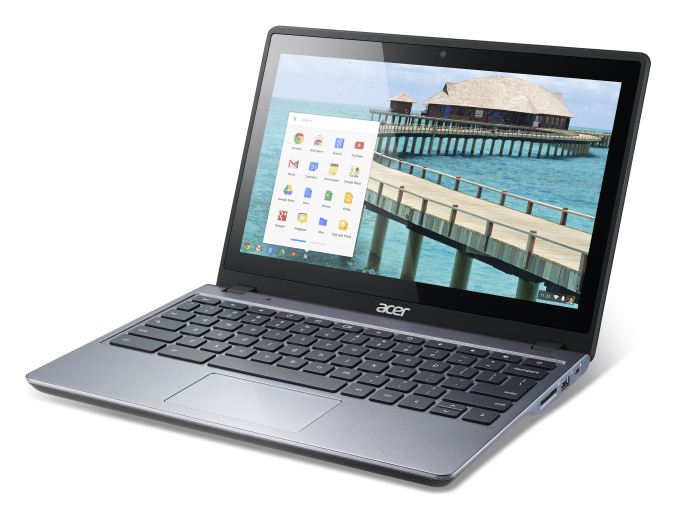

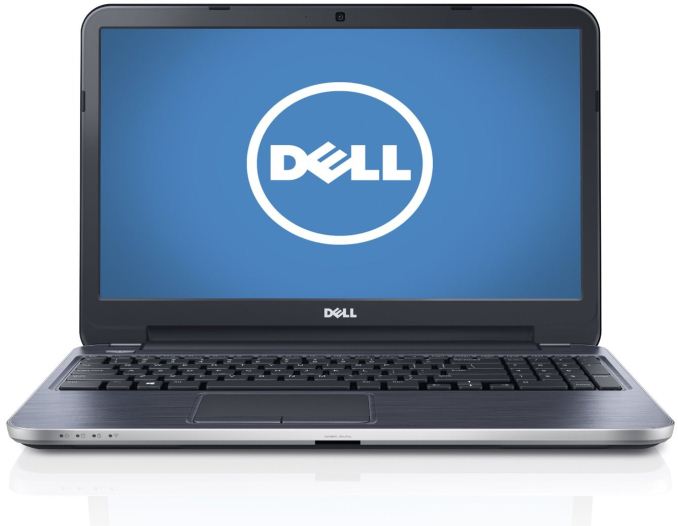

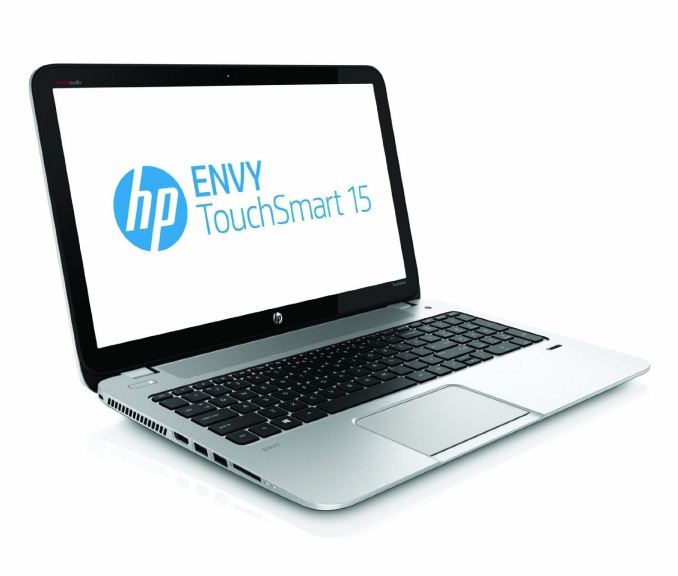
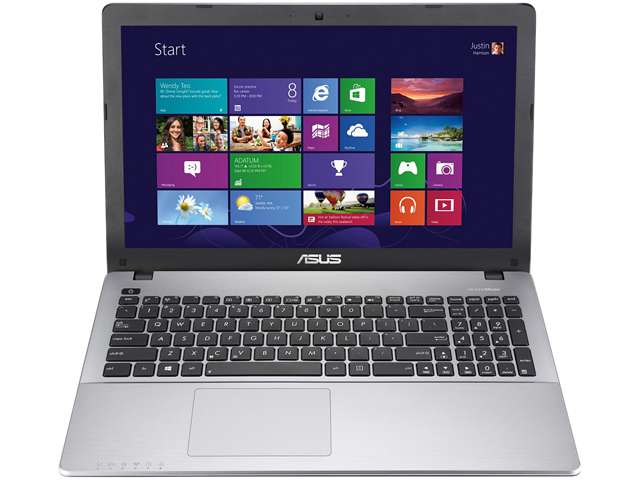
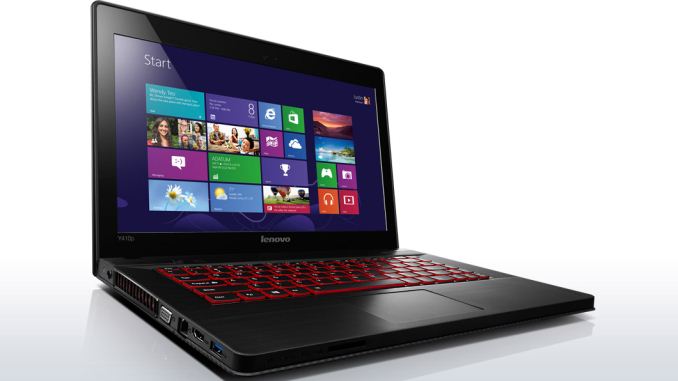
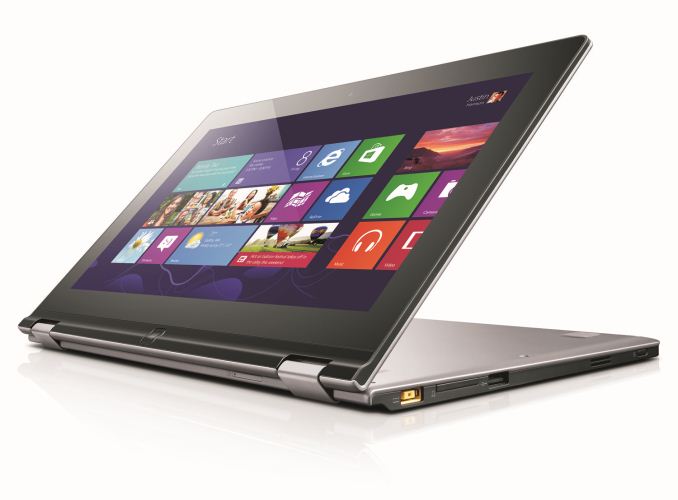
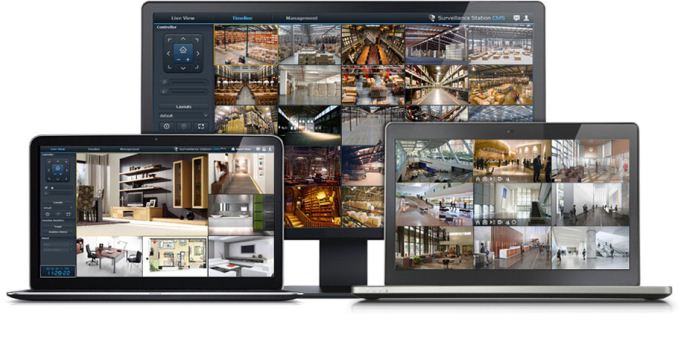











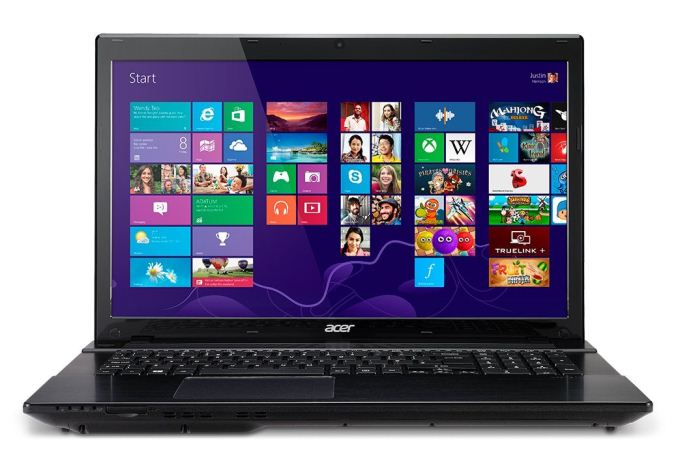
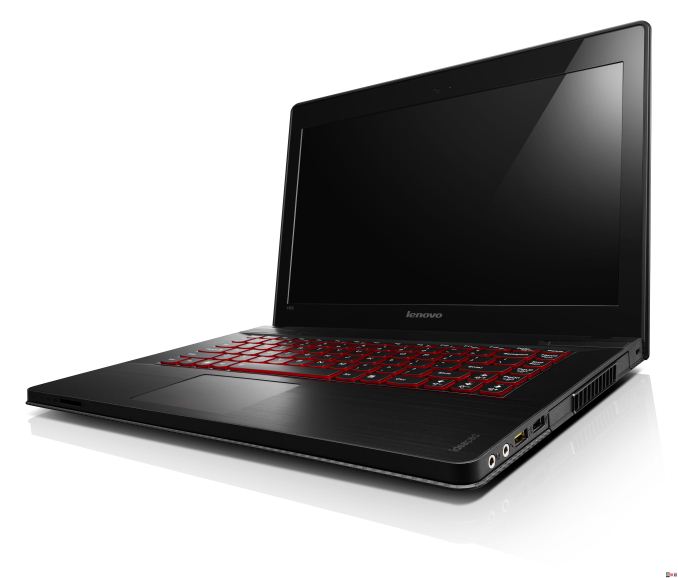
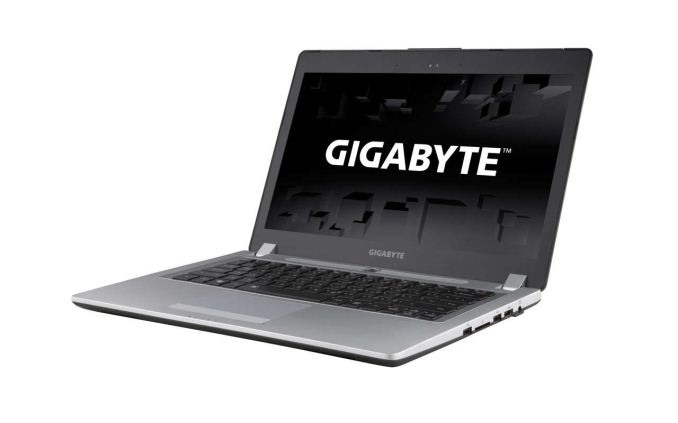
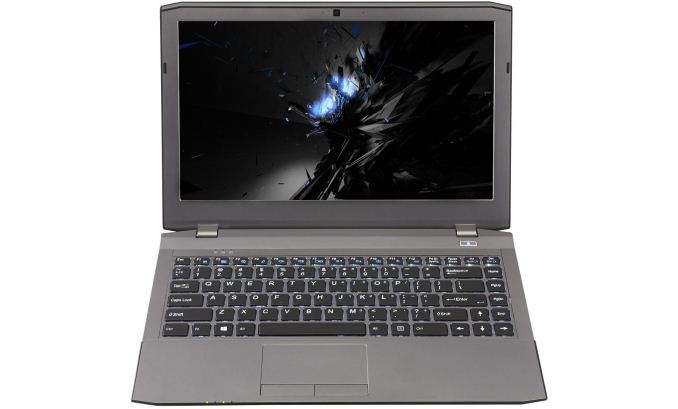
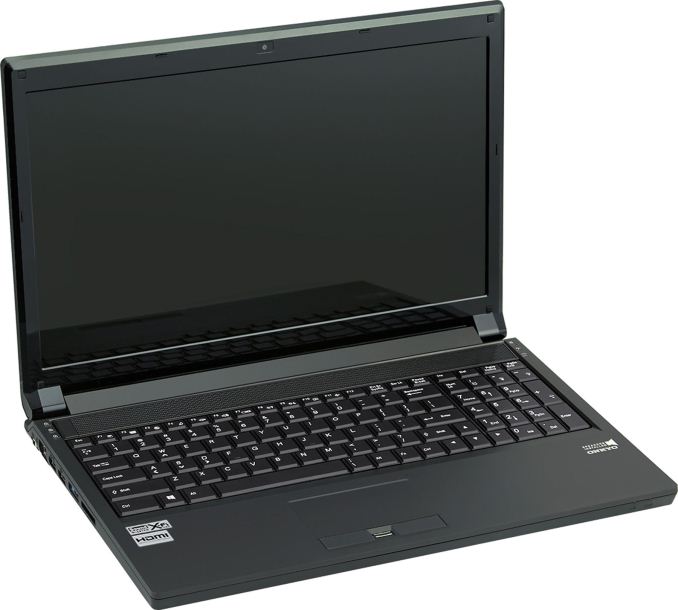
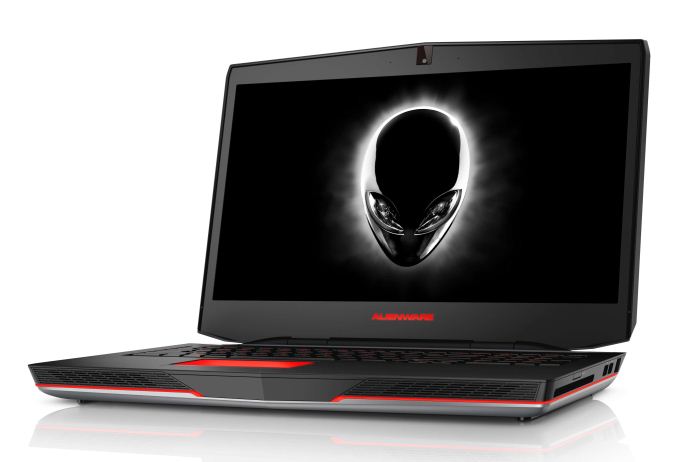
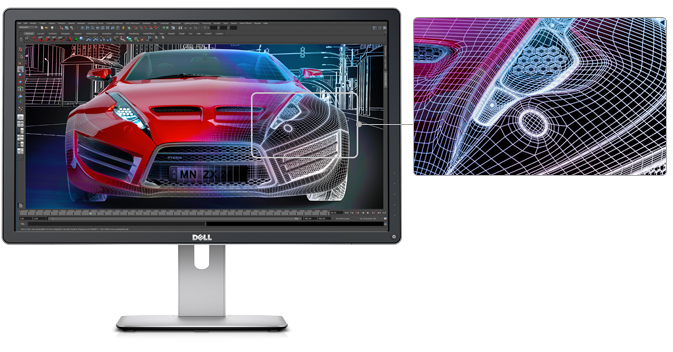
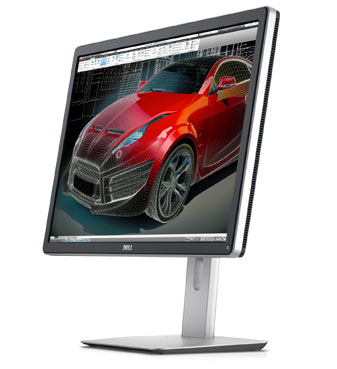
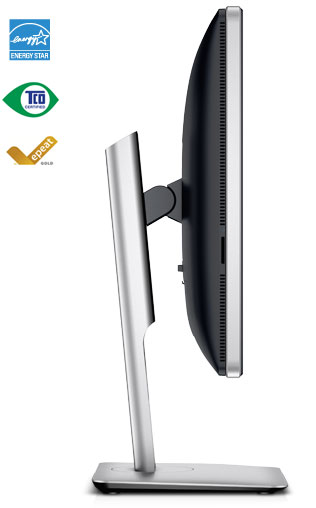

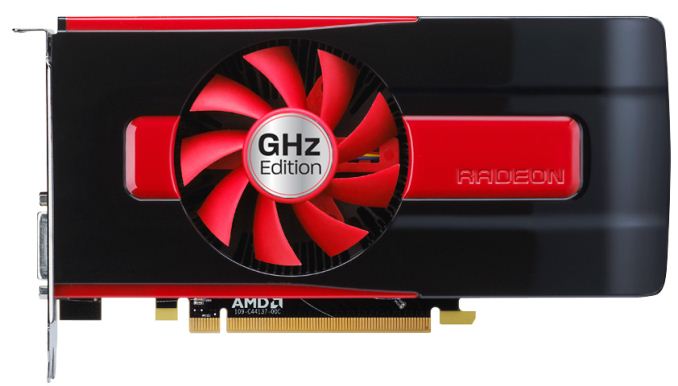
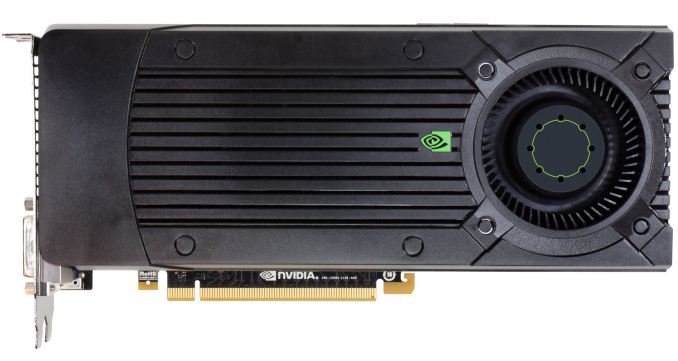
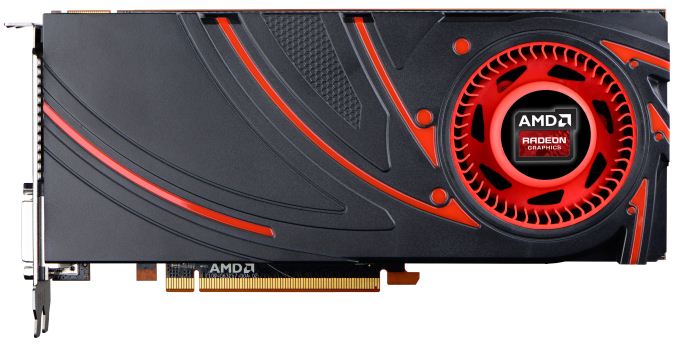
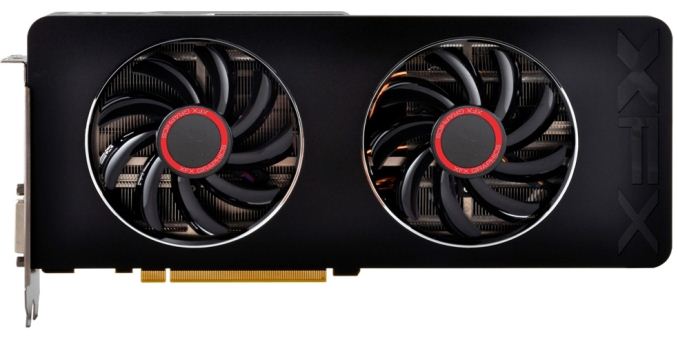

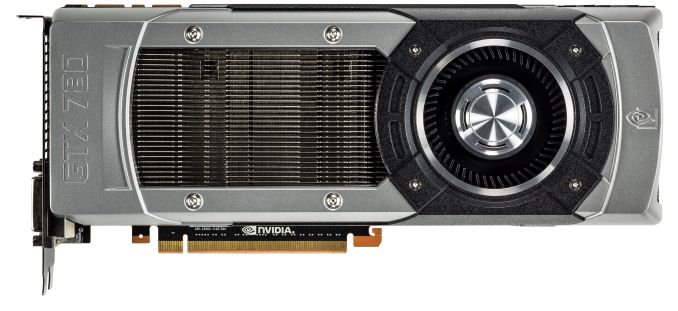
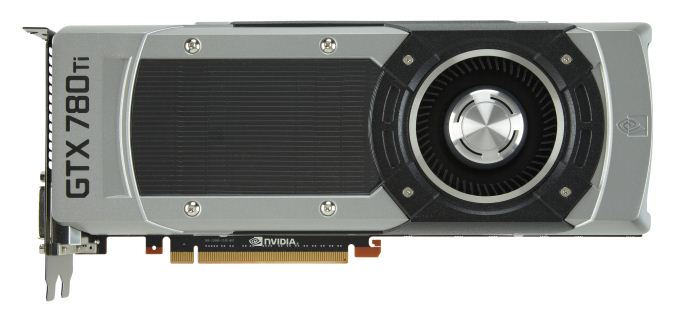

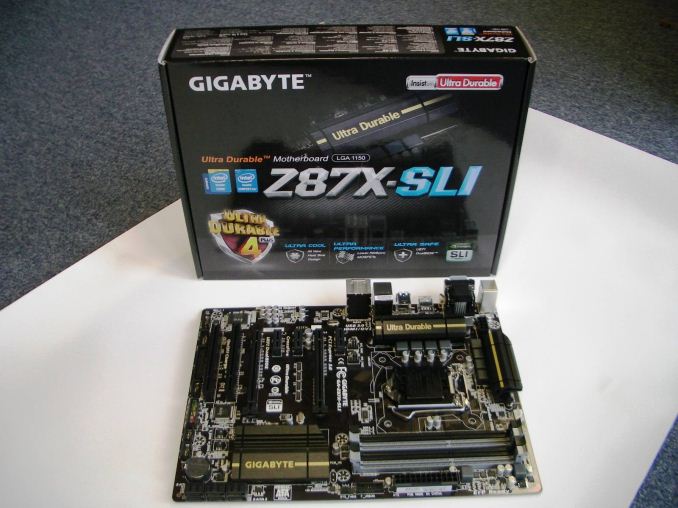
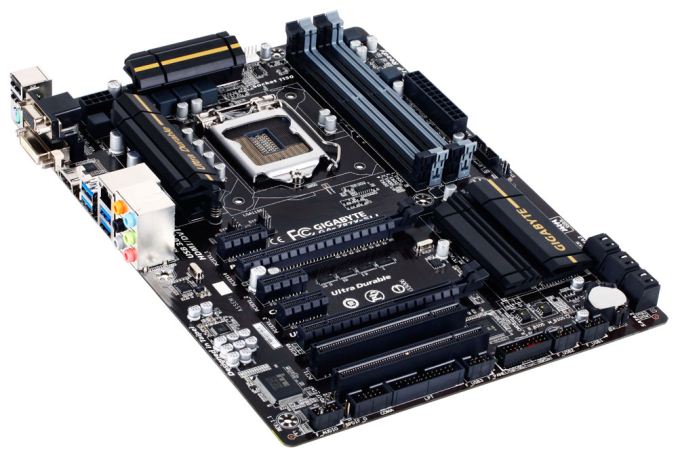
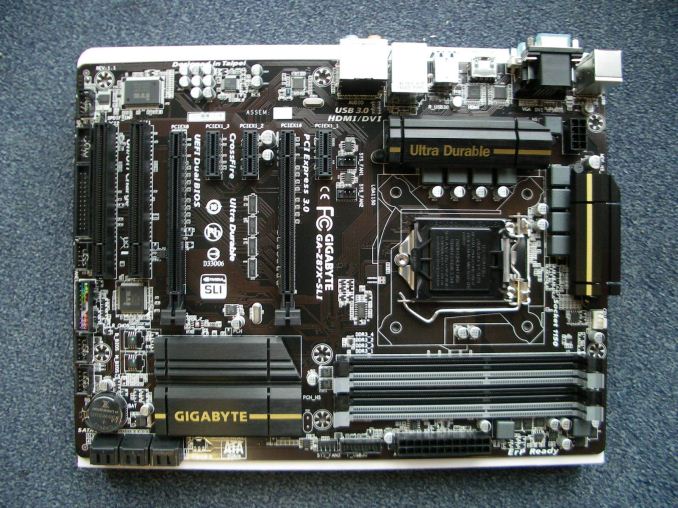
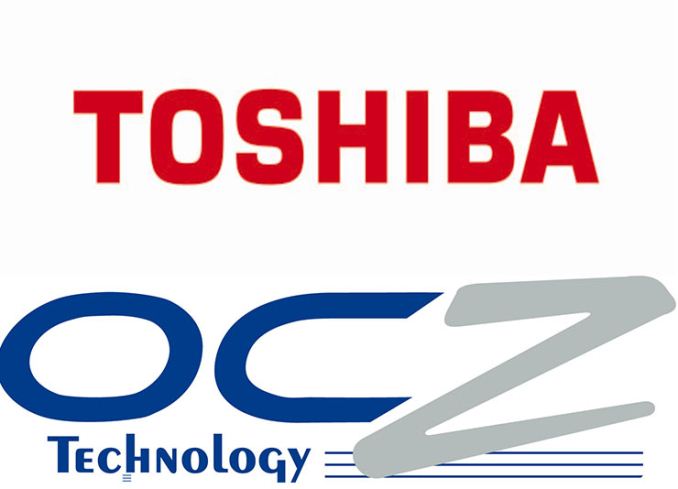
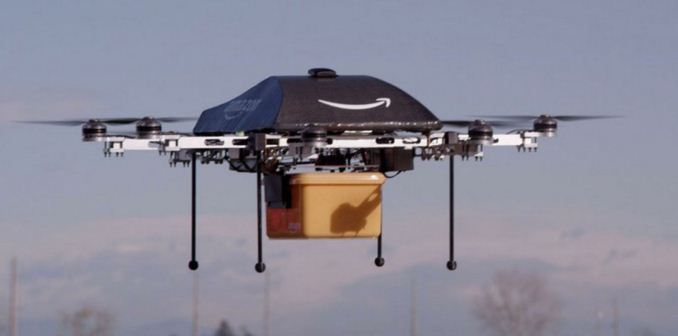
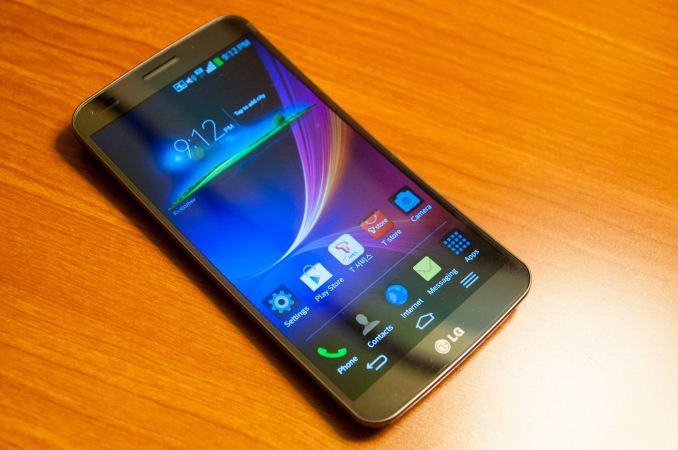
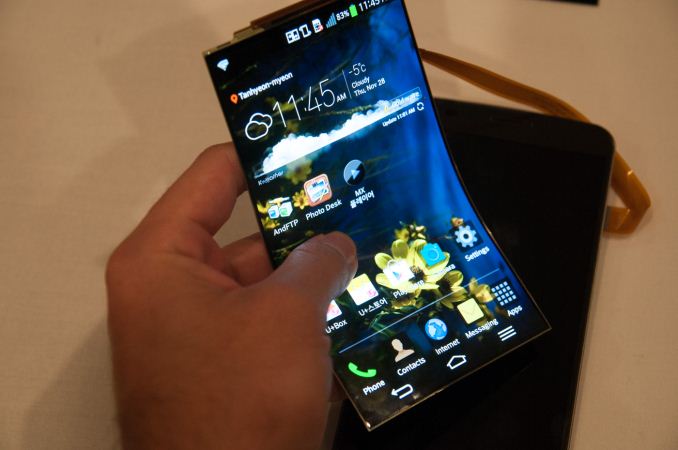
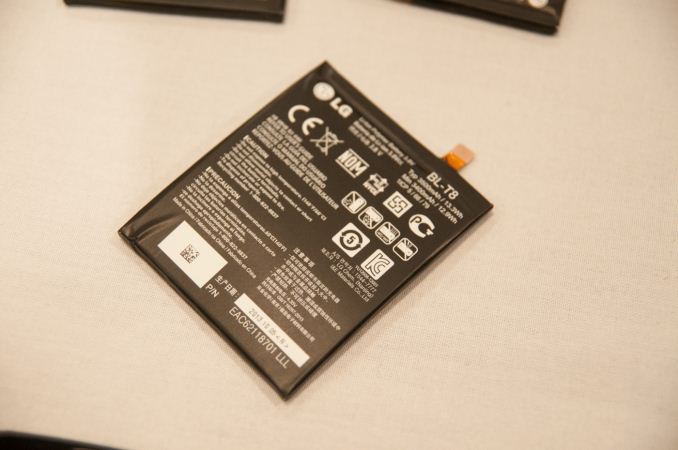
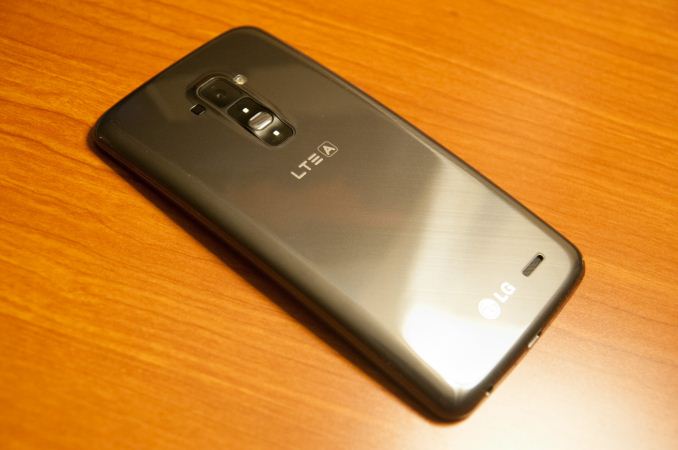
















Bookmarks